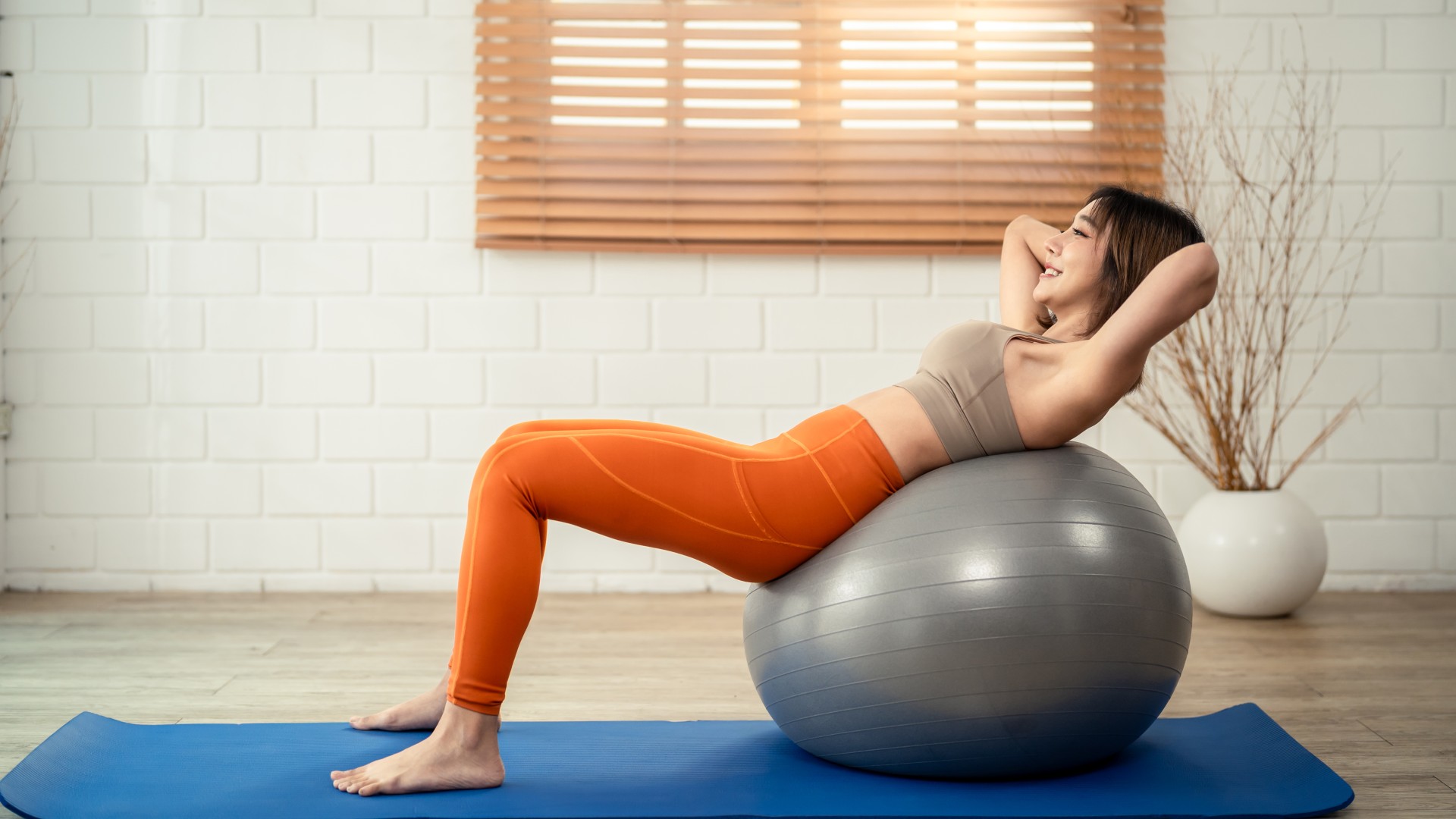
The SLBR exercise — Supine Lateral Ball Roll — is a Swiss ball staple for strengthening your spine.
Nicknamed “slobber” (it’s all in the pronunciation), the move will test your ability to balance and stabilize your body as you roll a Swiss ball (also known as a stability ball) from side to side.
Supine refers to facing upward, lateral means moving side-to-side and ball roll means you’ll roll sideways on an exercise ball. The move targets many muscle groups and helps to strengthen and mobilize your spine, shoulders, hips and surrounding muscles.
Below, I cover how to do the SLBR exercise, the benefits and common mistakes to be aware of. I also explain what I noticed when I added it to my routine.
What are the benefits of the SLBR exercise?
The SLBR helps strengthen the spine using a supported horizontal position without loading the body vertically or compressing the lower back. If you experience back, neck, or shoulder pain, you could benefit from adding the SLBR exercise to your routine.
But I always recommend seeking medical advice before starting a new exercise routine, especially if you have a diagnosed injury or are returning to exercise. Over time, the move could improve posture and upper body mobility and flexibility, strengthening the muscles responsible for supporting your spine and pelvis.

Many muscles run the length of the spine on either side, but there are a few worth noting when exercising for back pain or learning the anatomy of your back muscles.
The splenius cervicis and capitis support shoulder and neck movement, while erector spinae muscles such as the longissimus, iliocostalis and spinalis muscles help move the thoracic cage and upper back and head flexion.
Then you have deep or “intrinsic” muscles responsible for stabilizing the vertebral column, posture, proprioception and balance, including the semispinalis, multifidus (lumbar stabilizer) and rotatores (supports transverse motion).
The mobility exercise also targets the pelvis, teaching the pelvic region and the spine to work together in unity.
How to do the SLBR exercise
You’ll hear many trainers and physical therapists refer to the SLBR as a “big bang” exercise, meaning it does a lot in just one move. During the mobility drill, you’ll move through a horizontal plane of motion, reducing the load on the spine. You’ll need a Swiss ball and dowel rod or similar.
- Lay on your back on a Swiss ball. Position your head, neck and shoulders on the ball and slightly tuck your chin to create a neutral spine position
- Bend your knees and plant both feet on the ground, creating a 90-degree shape with your legs
- Keep a neutral spine and gently brace your stomach and glutes, lifting your hips to create a straight line from knees to shoulders
- Softly bend your elbows and extend your arms to the sides with palms facing upward
- If you have one, hold a dowel rod across your chest and grip the ends with both hands
- Roll slowly to one side while maintaining your body’s set-up position, keep the rod horizontal and step your feet with you as you move
- Hold, slowly roll to the center and over to the other side, then hold again
Repeat 6-12 reps per side and hold the position on each side for at least 5 seconds. Alternatively, spend 2-3 minutes on the exercise, moving with control.
Some trainers will ask clients to hold each position for 10 to 30 seconds, depending on ability and whether or not the goal is to work on endurance. Avoid leading with your feet, always rolling and controlling with your upper body and pelvis.
To progress the exercise, move as far laterally as you can, then practice lifting one leg at a time as you hold without dropping your hips.
Tips to practice the SLBR exercise
As you roll to one side, your body will try to rotate and drop to the side, allowing your shoulder to drop with it — avoid this and work to keep your upper body stable and facing upward with your hips raised and glutes engaged; this naturally engages the stabilizer muscles to prevent rotation and keep you in the horizontal position.
It’s also super common to drop the hips as you roll from side to side. Gently engage your glutes and press through your heels to maintain the parallel position.
I added the SLBR exercise into my routine for the first time recently, and it’s deceiving how simple yet effective it is. It took me several goes to master, but I loved that my shoulders felt more open and my upper body engaged.
It takes a lot of work to prevent spinal rotation, so I recommend taking it slow and building up the time you spend holding. And trust me, simply lifting one leg fires the whole body up tenfold.
Practice without the rod first, then add it once you feel comfortable with the movement. Use a well-pumped-up Swiss ball and check the size — you’ll need to be able to firmly press your feet down and support your upper body at the same time. If it’s your goal to build a stronger spine this year, give this a go.







